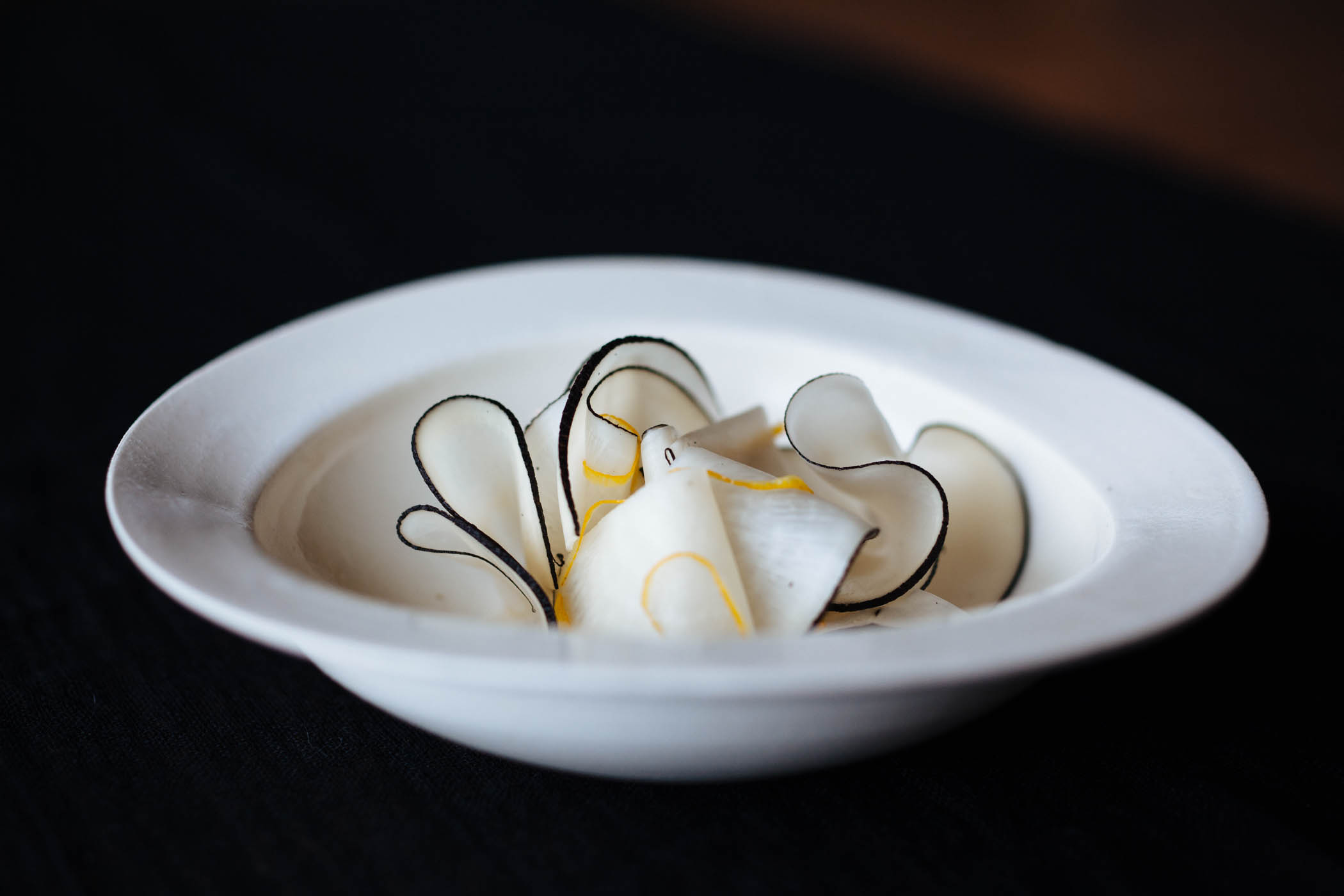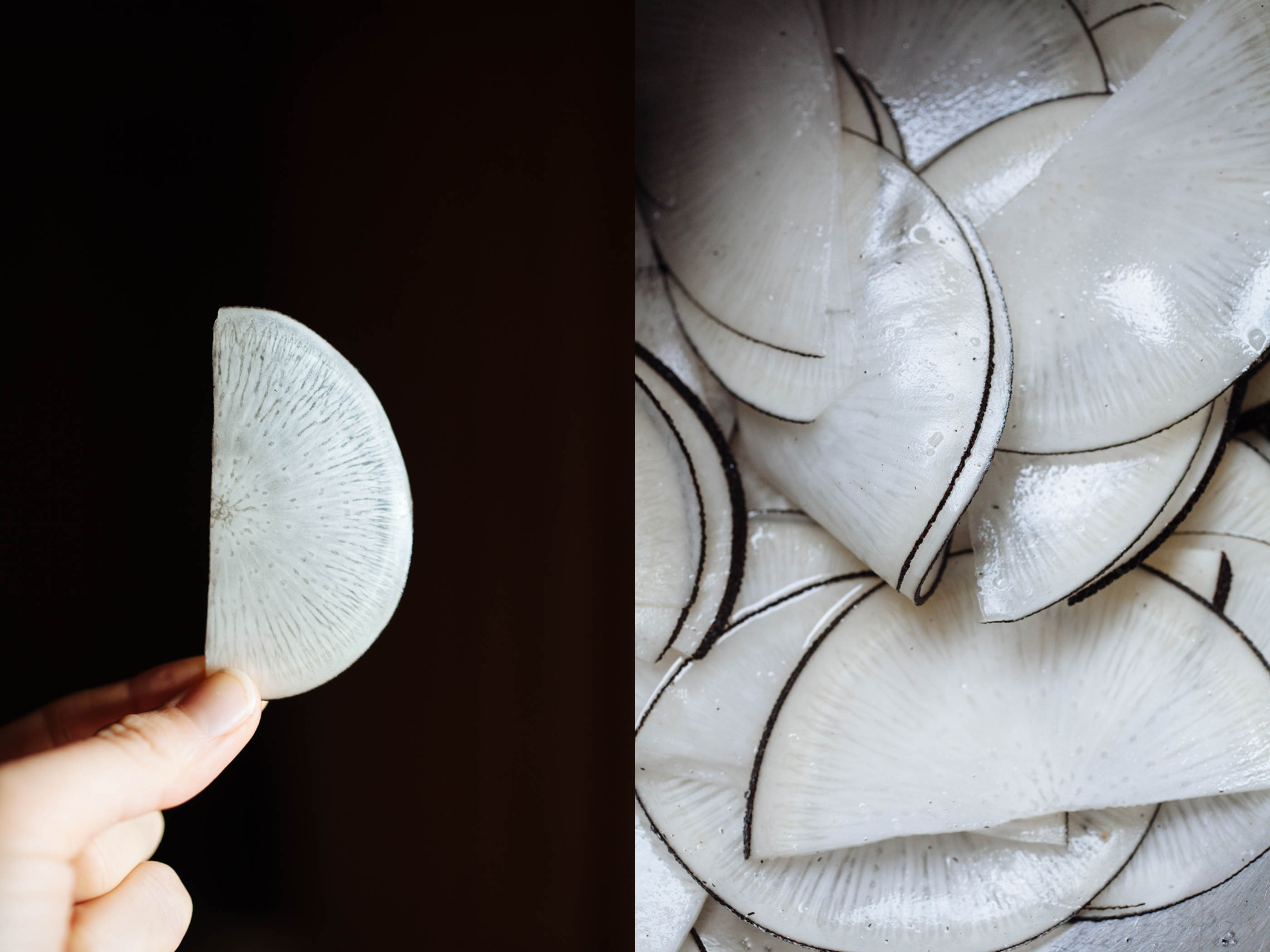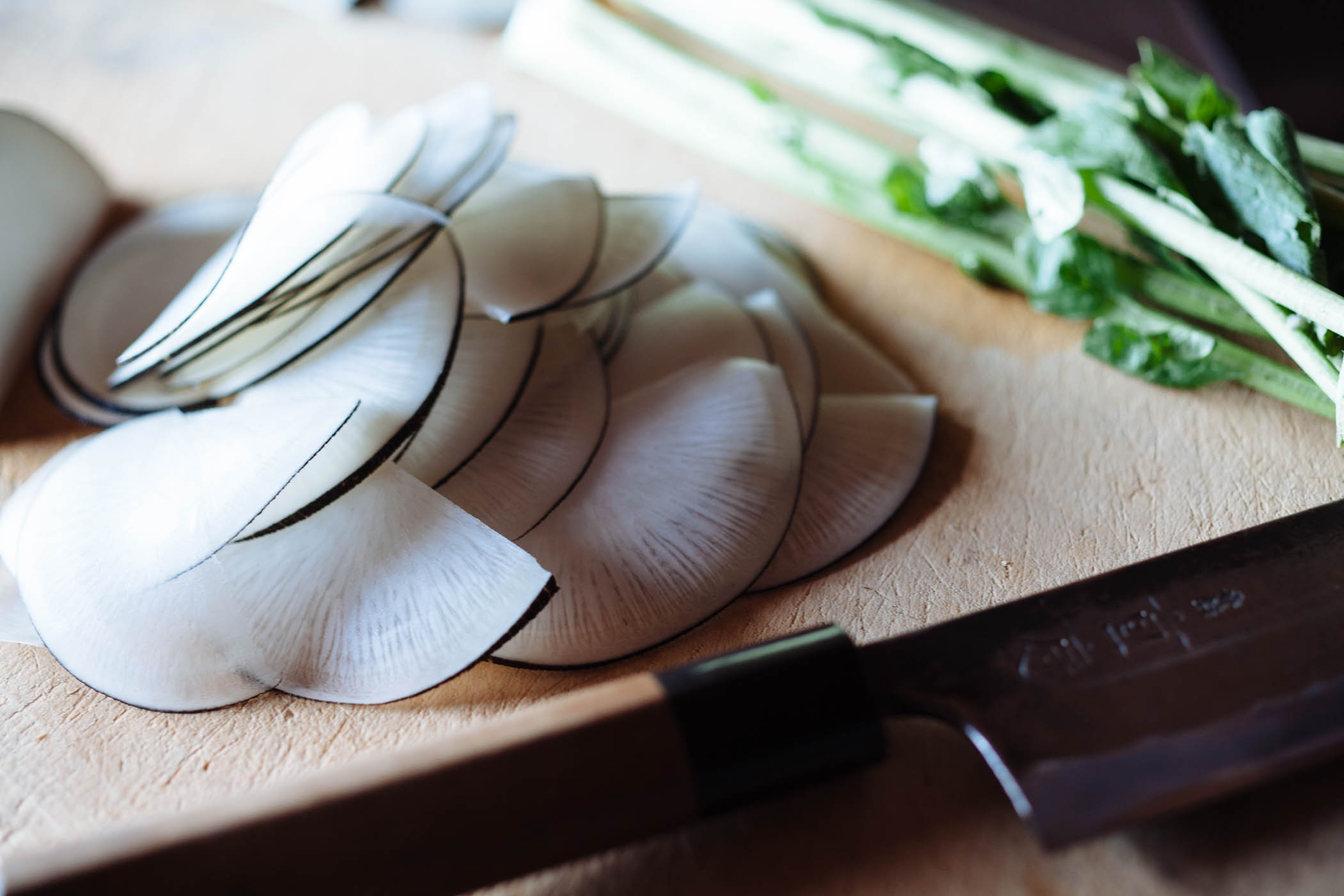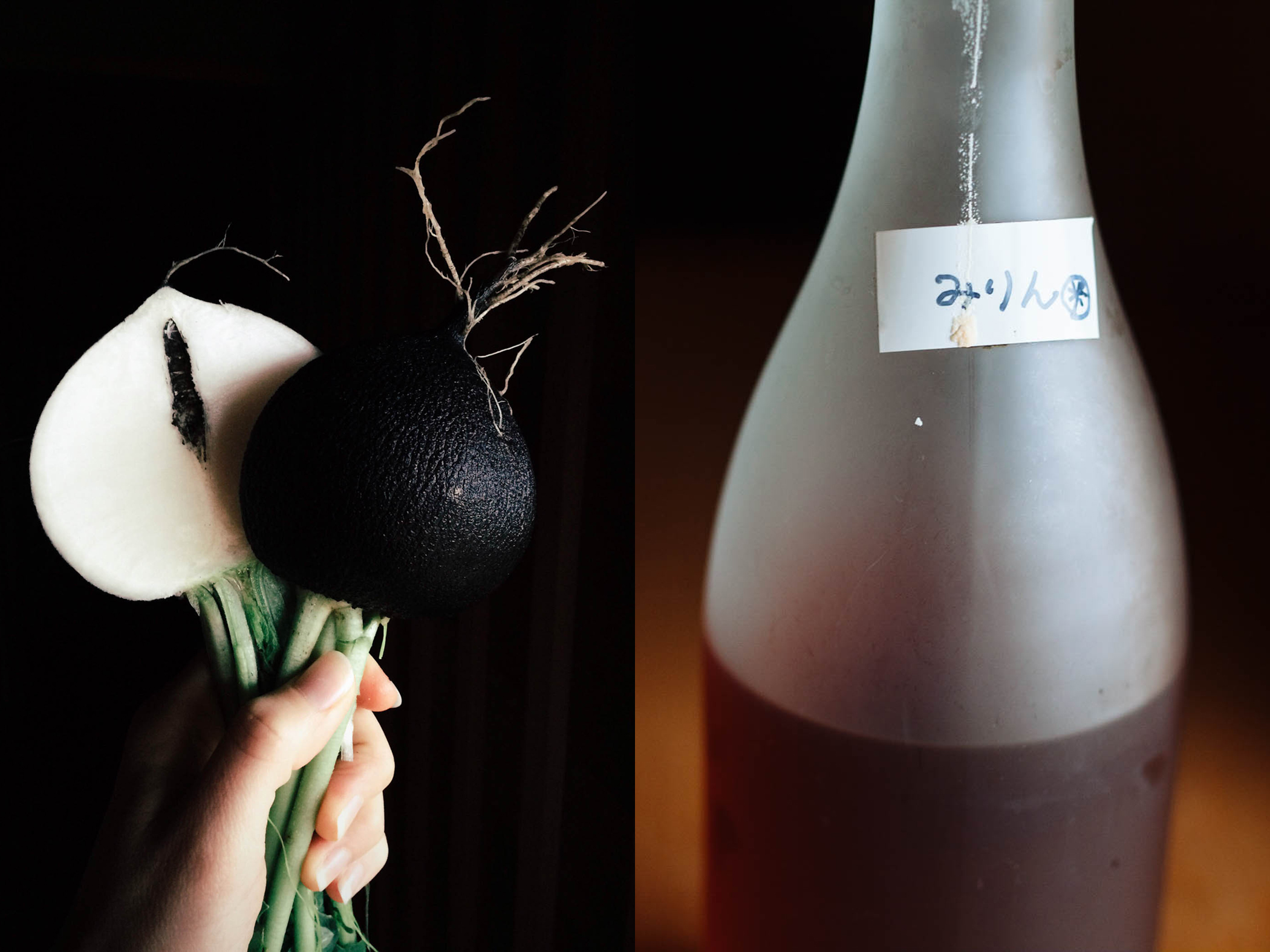Winter radish and roots salt pickle salad

In an archipelago of islands surrounded by vast seas, it’s no wonder salt is such an essential ingredient in Japanese cuisine. It’s a key ingredient within key ingredients, including soy and miso. It’s used to draw out moisture and plump the flesh of fish before preparing sashimi. And salt is the preservative in umeboshi, rakkyou, and every other kind of pickle from hakusai to nukazuke to the quickest of pickles prepared just before eating. Salt has saved many a leftover daikon radish or turnip peel from the compost bin and given culinary purpose winter’s array of roots. In winter we sometimes long for a dose of raw vegetables but few options abound. A salt pickle salad of black radish, watermelon radish, daikon radish, or even kohlrabi or celeriac can be just the helping of fibrous crunch we crave.

 It was many years ago, now, that I first fell in love with a handsome Spanish radish at the local market. It had a calloused coal-colored rind and smooth snow-white flesh. I was immediately smitten with rugged monochrome radish. The thin, black, tough-as-nails pelt begged to be discarded, but that line where it clung to the pearly flesh inside held all of its beauty. To peel it away would be to reject its most lovely aspect. The meat of the radish too held its own challenges. It resisted heat, staying marble hard until an undetectable moment when it surrendered and melted to mush. I bought them over and over, and though the dishes I offered my family at the table received sympathetic reviews at best, they too wanted to believe in this vegetable’s greater potential. Kuniko took particular interest in it the daikon and told her eldest daughter Koo about it. We were all captivated, united as a family in our determination to find a good way to bring it to the table. In the end, Koo and I independently came to the same conclusion, that ultimately it performed best in a traditional Japanese quick pickle salad, sliced as thinly as possible and salted for a few hours to later be rinsed and dressed for dinner. I liked Koo’s treatment of a bit of rice vinegar, mirin, and ribbons of yuzu rind. I hadn’t thought to use mirin but a splash of sweet mellowed the salt soaked bite of this radish’s peppery flesh.
It was many years ago, now, that I first fell in love with a handsome Spanish radish at the local market. It had a calloused coal-colored rind and smooth snow-white flesh. I was immediately smitten with rugged monochrome radish. The thin, black, tough-as-nails pelt begged to be discarded, but that line where it clung to the pearly flesh inside held all of its beauty. To peel it away would be to reject its most lovely aspect. The meat of the radish too held its own challenges. It resisted heat, staying marble hard until an undetectable moment when it surrendered and melted to mush. I bought them over and over, and though the dishes I offered my family at the table received sympathetic reviews at best, they too wanted to believe in this vegetable’s greater potential. Kuniko took particular interest in it the daikon and told her eldest daughter Koo about it. We were all captivated, united as a family in our determination to find a good way to bring it to the table. In the end, Koo and I independently came to the same conclusion, that ultimately it performed best in a traditional Japanese quick pickle salad, sliced as thinly as possible and salted for a few hours to later be rinsed and dressed for dinner. I liked Koo’s treatment of a bit of rice vinegar, mirin, and ribbons of yuzu rind. I hadn’t thought to use mirin but a splash of sweet mellowed the salt soaked bite of this radish’s peppery flesh.
Mirin is found in most pantries but it’s generally absent from our arsenal of condiments. When I came to Japan I adopted Kuniko’s standards and methods in the kitchen. She in turn had spent years cooking towards her husband Takashi’s standards at the table. He campaigned against sweeteners so she seasoned her dishes only with dashi, soy, sake, and salt, and I learned to do the same. But in my cupboard I had a special bottle of mirin on hand. When I interviewed a local sake brewer, Daisuke Komatsu, he had just begun making honmirin or true mirin. Honmirin is made from steamed mochigome, a sweeter rice, komekouji, rice inoculated with koji spores, and shouchu, a vodka like distilled alcohol. Mirin was originally made centuries ago as a drink for aristocratic women, Komatsu told me, and believing it had been a wonderful part of Japan’s beverage culture, he wanted to reintroduce it to his customers. Whether they chose to drink it or cook with it was up to them. What most people cook with today is the mirin you find clustered beside vinegar on the shelves of grocery stores and it’s at best a simulation of honmirin, he said. At the time his product was still in development, fermenting alongside the sakes his brewery is known for but he filled two frosted glass bottles with his prototype to send home with me. Perhaps for lack of an aristocratic palette I wasn’t partial to it as a drink so I added it to the drawer of cooking condiments where it stayed for a long time until a handsome but difficult radish reminded me to reach for Komatsu’s gift.
